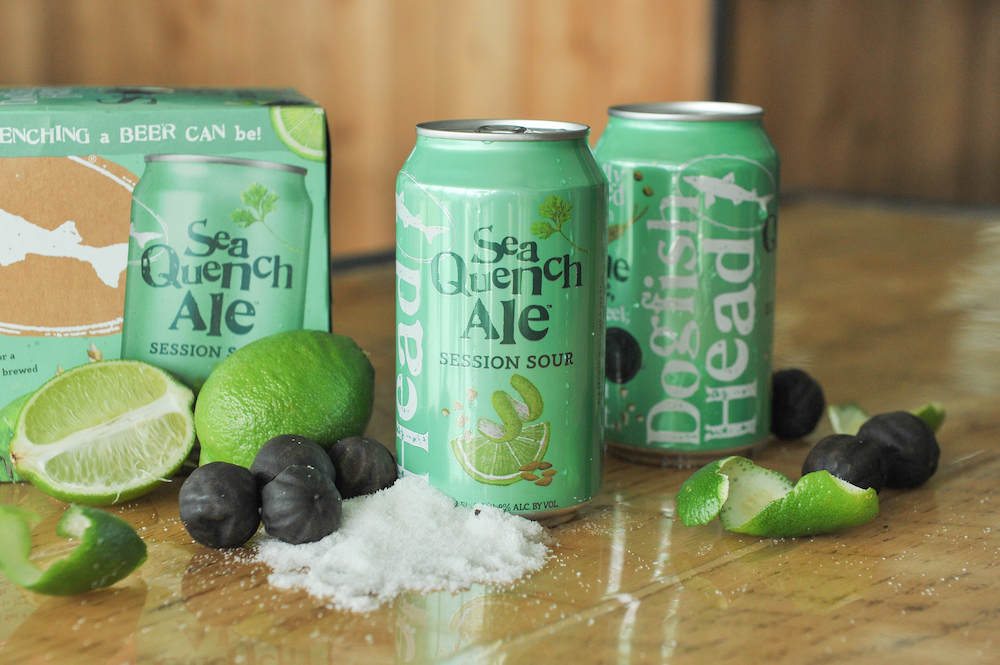Dogfish Head has remained a pioneer in the craft beer industry since opening in Milton, Delaware in 1995. Now available in 31 states, the brand has grown considerably in recent years, setting new volume records. Annually it produces around 225,000 barrels of beer.
But the craft beer industry overall faces headwinds. To discuss this and other pertitent topics, we recently sat down with Dogfish Head founder and president Sam Calagione.
Kyle Swartz: You recently came out against ‘commodity’ craft beer, i.e. less-expensive releases in the craft space. Why?
Sam Calagione: Dogfish Head has always followed a definitive path: We’ve always tried to innovate. That way we create excitement for beer-lovers who recognize and appreciate the special ingredients and processes of our beers. They know the type of beer we make has to cost more money. But they also understand that these beers can represent great value, overall, even at a higher price point.
I’m worried that too many craft breweries are now making beer not with a focus on flavor but affordability. The problem with that is the only entities with the scale to sustain that business model are multinational conglomerates.
I’m hoping that consumers will decide that craft beer pricing deserves to be stratified. That’s why I love to see little hot-shit breweries like Trillium find success with $17 4-packs. That’s good for the whole industry.
KS: We’ve seen the recent craft beer slowdown affect larger, legacy brewers like Smuttynose, New Belgium, Mendocino Brewing and Green Flash. Are you concerned?
SC: It should concern everyone in our industry. The promiscuity of the beer drinker and the beer retailer makes it harder than ever to establish brands. It’s hard to do that when everyone is so focused on whatever’s the shiny new thing. I’m hoping there’s a pendulum swing coming where people still want what’s new and shiny, but can also support established brands. There has to be room for both.
You know, as I’m traveling the east coast now, I’m getting a feel for trends. And I’m starting to see a little bit of movement away from local.
KS: Oh yeah? You think the current trend towards local beer might shift?
SC: Well, for instance, I stopped at a bar in South Carolina that has 20 taps. Of those, 12 were set aside for local just a few years ago. Now they’re down to five or six for local. Not that local is not going away, of course, but just because something is local doesn’t mean it’s good.
KS: So it’s a quality issue that could hurt smaller, local breweries?
SC: I think the focus is shifting more now towards quality, as well as differentiation in style. To succeed now as a new brewery you need to be world class in quality, differentiation, and consistency.
Seven or eight years ago you could get by just being world-class in two out of those three. Now have to be three-for-three. And not all breweries are focused on all three as they start up.
Where I see that especially hurting breweries is when they lack differentiation in style. If you start out and all your flagship beers are double IPAs and New England IPAs, you’re not differentiated.
KS: Among breweries that have differentiated, what have you seen that you liked?
SC: I see a lot of cool soft sours, Berliner Weisse, gose, also Belgium-styles, local coolships, wild ales, and beers made with local culinary ingredients.

KS: New England IPAs are real hot now. Will we ever see a Dogfish Head NEIPA?
SC: You’re not going to see a New England IPA out of Dogfish Head. I do enjoy them. I’m good friends with the guys at Trillium, and I’m super happy for them. But our beers are more about innovation, about being pioneers. New England IPA is not a style that I feel like we can put our thumbprint on.
KS: Speaking of the New England IPA wave, why have cans become the fashionable packaging for premium beers?
SC: Cans in general have really taken off. That’s definitely the case for us. Consumers are embracing really flavorful craft beers in cans. Seven or eight years ago, in order to sell those beers, you had to put them in 750s. Now people are not afraid to have super-flavorful craft beers in cans. We sell ours in 12-ounce and 19.2-ounce.
KS: What’s next for craft beer?
SC: I think as much as we talk in the industry about craft beer reaching a tipping point — because in the coming years we cannot sustain the current rate at which new breweries are opening — it’s not like we’re going to see craft beer’s market share go down.
However, we might be hitting a moment of market correction where we start seeing more breweries close down. But that might be a healthy thing for our industry. It means that consumers are championing breweries that are making great beers with real integrity.
Right now craft beer has about a 12% market share of the overall beer market. I’m hopeful that in the next ten years, we can get that up to 20%.
Kyle Swartz is an editor of Beverage Wholesaler. Reach him at kswartz@epgmediallc.com or on Twitter @kswartzz. Read his recent piece 11 Trends Defining Craft Beer in 2018.









